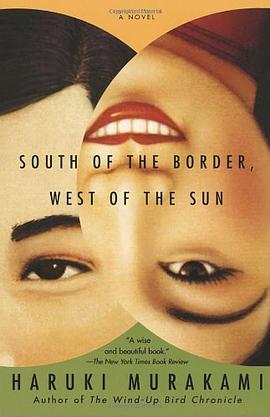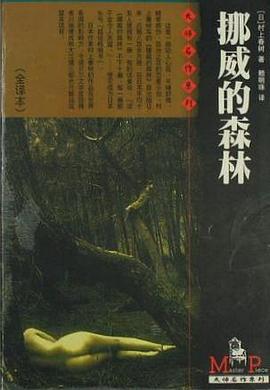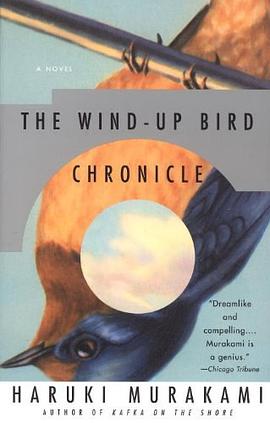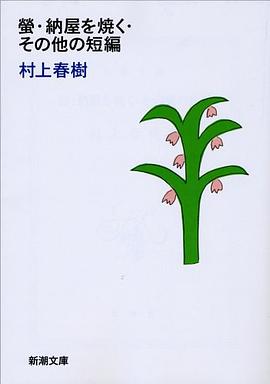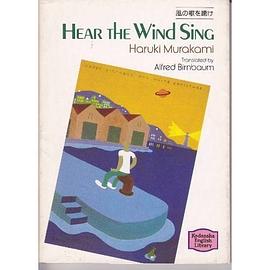

具体描述
在线阅读本书
Book Description
First American Publication
This stunning and elegiac novel by the author of the internationally acclaimed Wind-Up Bird Chronicle has sold over 4 million copies in Japan and is now available to American audiences for the first time. It is sure to be a literary event.
Toru, a quiet and preternaturally serious young college student in Tokyo, is devoted to Naoko, a beautiful and introspective young woman, but their mutual passion is marked by the tragic death of their best friend years before. Toru begins to adapt to campus life and the loneliness and isolation he faces there, but Naoko finds the pressures and responsibilities of life unbearable. As she retreats further into her own world, Toru finds himself reaching out to others and drawn to a fiercely independent and sexually liberated young woman.
A poignant story of one college student's romantic coming-of-age, Norwegian Wood takes us to that distant place of a young man's first, hopeless, and heroic love.
Amazon.co.uk
"I once had a girl, or should I say, she once had me" "Norwegian Wood" (Lennon/McCartney).
With Norwegian Wood Murakami, best known as the author of off-kilter classics such as the Wind Up Bird Chronicle, A Wild Sheep Chase and Hard Boiled Wonderland, finally achieved widespread acclaim in his native Japan. The novel sold upwards of 4 million copies and forced the author to retreat to Europe, fearful of the expectations accompanying his new-found cult status.
The novel is atypical for Murakami: seemingly autobiographical, in the tradition of many Japanese "I" novels, Norwegian Wood is a simple coming of age tale set, primarily, in 1969/70, the time of Murakami's own university years. The political upheavals and student strikes of the period form the backdrop of the novel but the focus here is the young Watanabe's love affairs and the pain (and pleasure) of growing up with all its attendant losses, (self-)obsessions and crises.
The novel is split into two volumes and beautifully presented here in a "gold" box containing both the green book and the red book. Young Japanese fans became so obsessed with the work that they would dress entirely in one or other colour denoting which volume they most identified with. And the novel is hugely affecting, reading like a cross between Plath's Bell Jar and Vizinczey's In Praise of Older Women, if less complex and ultimately less satisfying than Murakami's other, more allegorical, work. He captures the huge expectation of youth, and of this particular time in history, for the future and for the place of love in it. He also saturates the work with sadness, an emotion that can cripple a novel but which here underscores the poignancy of the work's rather thin subject matter.
--Mark Thwaite
Amazon.com
In 1987, when Norwegian Wood was first published in Japan, it promptly sold more than 4 million copies and transformed Haruki Murakami into a pop-culture icon. The horrified author fled his native land for Europe and the United States, returning only in 1995, by which time the celebrity spotlight had found some fresher targets. And now he's finally authorized a translation for the English-speaking audience, turning to the estimable Jay Rubin, who did a fine job with his big-canvas production The Wind-Up Bird Chronicle. Readers of Murakami's later work will discover an affecting if atypical novel, and while the author himself has denied the book's autobiographical import--"If I had simply written the literal truth of my own life, the novel would have been no more than fifteen pages long"--it's hard not to read as at least a partial portrait of the artist as a young man.
Norwegian Wood is a simple coming-of-age tale, primarily set in 1969-70, when the author was attending university. The political upheavals and student strikes of the period form the novel's backdrop. But the focus here is the young Watanabe's love affairs, and the pain and pleasure and attendant losses of growing up. The collapse of a romance (and this is one among many!) leaves him in a metaphysical shambles:
I read Naoko's letter again and again, and each time I read it I would be filled with the same unbearable sadness I used to feel whenever Naoko stared into my eyes. I had no way to deal with it, no place I could take it to or hide it away. Like the wind passing over my body, it had neither shape nor weight, nor could I wrap myself in it.
This account of a young man's sentimental education sometimes reads like a cross between Sylvia Plath's The Bell Jar and Stephen Vizinczey's In Praise of Older Women. It is less complex and perhaps ultimately less satisfying than Murakami's other, more allegorical work. Still, Norwegian Wood captures the huge expectation of youth--and of this particular time in history--for the future and for the place of love in it. It is also a work saturated with sadness, an emotion that can sometimes cripple a novel but which here merely underscores its youthful poignancy.
--Mark Thwaite
From Publishers Weekly
In a complete stylistic departure from his mysterious and surreal novels (The Wind-Up Bird Chronicle; A Wild Sheep Chase) that show the influences of Salinger, Fitzgerald and Tom Robbins, Murakami tells a bittersweet coming-of-age story, reminiscent of J.R. Salamanca's classic 1964 novel, LilithAthe tale of a young man's involvement with a schizophrenic girl. A successful, 37-year-old businessman, Toru Watanabe, hears a version of the Beatles' Norwegian Wood, and the music transports him back 18 years to his college days. His best friend, Kizuki, inexplicably commits suicide, after which Toru becomes first enamored, then involved with Kizuki's girlfriend, Naoko. But Naoko is a very troubled young woman; her brilliant older sister has also committed suicide, and though sweet and desperate for happiness, she often becomes untethered. She eventually enters a convalescent home for disturbed people, and when Toru visits her, he meets her roommate, an older musician named Reiko, who's had a long history of mental instability. The three become fast friends. Toru makes a commitment to Naoko, but back at college he encounters Midori, a vibrant, outgoing young woman. As he falls in love with her, Toru realizes he cannot continue his relationship with Naoko, whose sanity is fast deteriorating. Though the solution to his problem comes too easily, Murakami tells a subtle, charming, profound and very sexy story of young love bound for tragedy. Published in Japan in 1987, this novel proved a wild success there, selling four million copies. (Sept.)
Book Dimension
length: (cm)20.6 width:(cm)13.9
用户评价
##越到后面越入佳境,村上太懂少年心事了
评分##A much better translation than the Chinese version. Still sort of can't stand Murakami though.
评分##村上真的很棒,把每一种关系都用一种全然客观又compassionate的方式描绘出来了。贴心的英文译本,如果可以,我会把它带到美国。重读一遍后发现初美那段最最让我痛心,完全是个爱情理想主义者的自我毁灭。她和永泽这样的关系太让我熟悉。所幸渡边也陪我一起唏嘘,也陪我一起与孤独共处。看完这段后再看Midori,你会不由地希望自己变积极起来。以前看到最后一章总是会快进,但是这次看到渡边对于爱情的过渡,我感觉到深深的慰藉和安心。没有fast recovery,只有不知不觉得到的蜕变。
评分##英译和中译果然相差很大。。。
评分##装帧好差啊!
评分##村上真的很棒,把每一种关系都用一种全然客观又compassionate的方式描绘出来了。贴心的英文译本,如果可以,我会把它带到美国。重读一遍后发现初美那段最最让我痛心,完全是个爱情理想主义者的自我毁灭。她和永泽这样的关系太让我熟悉。所幸渡边也陪我一起唏嘘,也陪我一起与孤独共处。看完这段后再看Midori,你会不由地希望自己变积极起来。以前看到最后一章总是会快进,但是这次看到渡边对于爱情的过渡,我感觉到深深的慰藉和安心。没有fast recovery,只有不知不觉得到的蜕变。
评分##我想说这翻译太厉害了
评分##越到后面越入佳境,村上太懂少年心事了
评分##A much better translation than the Chinese version. Still sort of can't stand Murakami though.
相关图书
本站所有内容均为互联网搜索引擎提供的公开搜索信息,本站不存储任何数据与内容,任何内容与数据均与本站无关,如有需要请联系相关搜索引擎包括但不限于百度,google,bing,sogou 等,本站所有链接都为正版商品购买链接。
© 2025 windowsfront.com All Rights Reserved. 静流书站 版权所有


